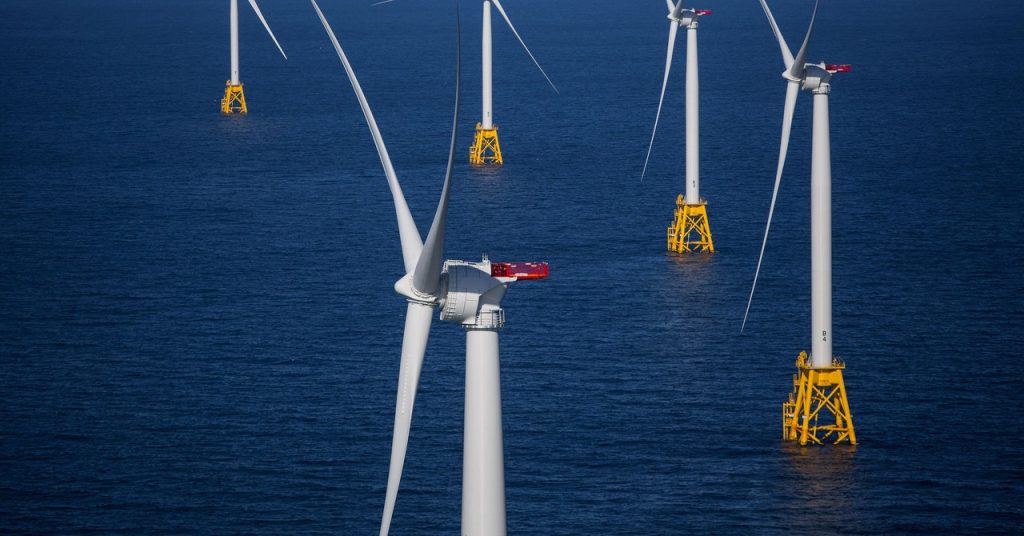Offshore Wind Development: Challenges and Progress
Introduction
The journey to establish offshore wind farms in the U.S. has been long and fraught with challenges. From regulatory delays to rising costs, the path to harnessing wind energy off the coast has been anything but smooth.
Regulatory Delays and Rising Costs
Extended Approval Times
The process of getting wind turbines operational off Martha’s Vineyard took about nine years from the initial lease auction to the first electricity generation. This lengthy timeline is a significant hurdle for developers.
Inflation and Supply Chain Issues
Contracts for these projects often lacked mechanisms to adjust for rising supply costs during the approval period. The world faced the Covid-19 pandemic, inflation, global supply chain disruptions, increased financing costs, and the war in Ukraine, all contributing to steep increases in commodity prices. While other countries are building projects faster and on a larger scale, the U.S. still takes about six years to complete similar projects (Global Offshore Wind Report 2023).
Shipping Rules and Power Connections
The Jones Act
A significant hurdle is the century-old Jones Act, which mandates that vessels carrying cargo between U.S. points must be U.S.-built, U.S.-operated, and U.S.-owned (Jones Act). Currently, there are only three offshore wind turbine installation vessels globally that are large enough for U.S. projects, and none comply with the Jones Act. This means components must be transported by smaller barges from U.S. ports and then installed by foreign vessels, increasing costs and delays.
New Vessel Construction
Dominion Energy is constructing a new ship, the Charybdis, to comply with the Jones Act (Charybdis). However, a typical offshore wind farm requires over 25 different types of vessels for various tasks, from crew transfers to heavy lifting.
Workforce and Grid Upgrades
The U.S. also lacks a well-trained workforce for the manufacturing, construction, and operation of offshore wind farms (Offshore Workforce). Additionally, significant upgrades to the electricity grid are necessary to handle power from offshore wind farms. The Department of Energy is working on regional transmission plans, but permitting will likely be slow (DOE Strategy).
Legal and Social Challenges
Lawsuits and Opposition
Numerous lawsuits from advocacy groups and wealthy homeowners have slowed development. Some groups, claiming to be environmental advocates but supported by fossil fuel interests, have launched disinformation campaigns (Astroturfing).
Disinformation Campaigns
In 2023, many Republican politicians and conservative groups blamed offshore wind developers for whale deaths off the coast of New York and New Jersey. However, evidence points to increased ship traffic and entanglements with fishing gear as the actual causes (Whale Deaths).
“Such disinformation can reduce public support and slow projects’ progress.”
Moving Forward
Government Goals and Incentives
The Biden administration aims to install 30 gigawatts of offshore wind capacity by 2030, but recent estimates suggest the actual number will be closer to half that (Biden’s Goal).
Financial Incentives
Despite the challenges, developers have reasons to proceed. The Inflation Reduction Act offers incentives, including federal tax credits for clean energy projects and for developers building port facilities in areas previously reliant on fossil fuels (Federal Tax Credits, Port Facilities). Coastal state governments are also facilitating projects by allowing price readjustments after environmental approvals.
Conclusion
These financial benefits can make building an offshore wind industry more attractive to companies, providing market stability and a pipeline of projects that can create jobs, boost economic growth, and contribute to a cleaner environment.

2 Comments
Delays, delays, delays… Who knew bureaucracy could be so thrilling?
Regulatory hurdles striking again, or just a convenient excuse?